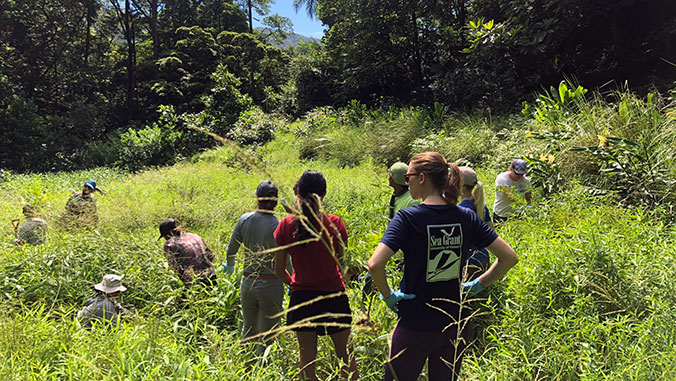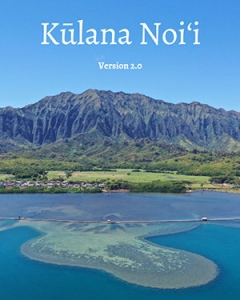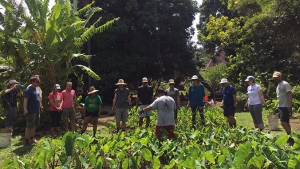
A groundbreaking publication that seeks to build more just and generative relationships between researchers and community members was updated to better reflect the nuances and complexities of community-researcher partnerships. Kūlana Noiʻi version 2.0, a collaboration involving the University of Hawaiʻi Sea Grant College Program, includes an enhanced introduction with guidance on using the publication as a starting point to spark deeper conversations. It also includes updates to each of the kūlana (posture and carriage) to reflect lessons learned in previous/ongoing partnerships.
Kūlana Noiʻi was initially developed in 2017 through a partnership between university researchers and place-based stewards to ensure equitable and reciprocal relationships with those connected to, and caring for, the ahupuaʻa of Heʻeia. It outlined a set of ideas, values and behaviors that served as a resource to facilitate open conversation and clearly articulated expectations.

Since Kūlana Noiʻi was first released, more than 600 researchers, community members and resource stewards have been trained through more than 40 workshops on building and nurturing pilina (relationships) and Aʻo aku, aʻo mai / Aloha aku, aloha mai (knowledge given, knowledge received / love given, love received).
It has also had far-reaching impacts beyond Hawaiʻi, and has been shared nationally through peer-reviewed journal articles, the NOAA Sea Grant traditional and local knowledge vision document, the Climate Adaptation Knowledge Exchange website, as a resource in creating the Arctic Science Summit Week 2021 Code of Conduct and more.
Rosie Alegado, director of the UH Sea Grant College Program's Center for Integrated Knowledge Systems, said "This guidance document also has resonance for other academic institutions that strive to center justice and equity in their work."
Next, the Kūlana Noiʻi Working Group intends to focus on developing additional curricula to train STEM faculty and graduate students in this process. "A key starting point for University of Hawaiʻi becoming a Native Hawaiian place of learning is for our researchers to adopt a praxis of working in partnership and active engagement with local communities," said Alegado.

Although Kūlana Noiʻi was initially envisioned through partnerships among the UH Sea Grant College Program, Kuaʻāina Ulu ʻAuamo, the Hawaiian Islands Sentinel Site Cooperative and the Heʻeia National Estuarine Research Reserve, it does not belong to any single organization, institution or community. It is rooted in the collective knowledge, insight and many years of effort contributed by communities, organizations and experts across Hawaiʻi.
This publication is an example of UH Mānoa's goal of Becoming a Native Hawaiian Place of Learning (PDF) and Excellence in Research: Advancing the Research and Creative Work Enterprise (PDF), two of four goals identified in the 2015–25 Strategic Plan (PDF), updated in December 2020.






